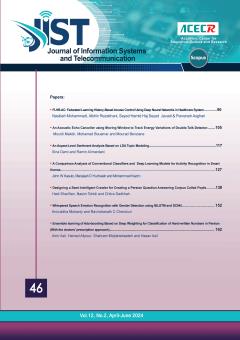In this paper, a new spatio-temporal based approach is proposed which improves the speed and performance of temporal-based algorithms, conventional Least Mean Square (LMS), Normalized LMS (NLMS) and Variable Step-size LMS (VSLMS), by using the switched beam technique. I
More
In this paper, a new spatio-temporal based approach is proposed which improves the speed and performance of temporal-based algorithms, conventional Least Mean Square (LMS), Normalized LMS (NLMS) and Variable Step-size LMS (VSLMS), by using the switched beam technique. In the proposed algorithm, first, DOA of the signal source is estimated by MUltiple SIgnal Classification (MUSIC) algorithm. In the second step, depending on the desired user's location, the closest beam of the switched beam system is selected and its predetermined weights are chosen as the initial values for the weight vector. Finally, LMS/NLMS/VSLMS algorithm is applied to initial weights and final weights are calculated. Simulation results show improved convergence and tracking speed and also a higher efficiency in data transmission through increasing the Signal to Interference plus Noise Ratio (SINR) as well as decreasing the Bit Error Rate (BER) and Mean Square Error (MSE), in a joint state. Moreover, Error Vector Magnitude (EVM) as a measure for distortion introduced by the proposed adaptive scheme on the received signal is evaluated for all LMS-based proposed algorithms which are approximately the same as that for conventional ones. In order to investigate the tracking capability of the proposed method, the system is assumed to be time varying and the desired signal location is considered once in the centre of the initial beam and once in the edge of the fixed beam. As depicted in simulation results, the proposed DOA-based methods offer beamforming with higher performance in both cases of the initial beam, centre as the best case and edge as the worst case, with respect to conventional ones. The MSE diagrams for this time varying system show an ideal response for DOA-based methods in the best case. Also, in the worst case, initial height of MSE is reduced and consequently the required iteration to converge is less than the conventional LMS/NLMS/VSLMS
Manuscript profile


